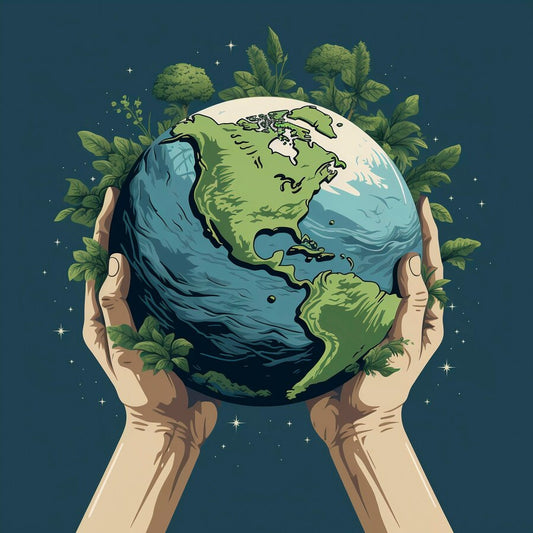Before I launched Stix I co-hosted a sustainability podcast called The Greenscore for a couple of years. I wanted to look at how we as individuals could make changes in what we use, or how we use it, to play our part in fighting climate change. I wanted to provide a really clear and simple picture so that everyone could be empowered to make some better choices and understand the science behind it.
Issue was, most episodes we could not really find a 100% simple answer. There was no silver bullet.
Sustainable fashion is no different. It’s really complicated - every choice involves a trade-off. Sometimes it's a bad choice vs a less bad choice.
Cotton (and Organic Cotton) is a great example of this. It’s a naturally occurring material so it should be super sustainable right? Right?

The issue with Cotton:
Sadly not. Cotton is naturally occurring. But it comes with a host of issues. One of the biggest is the scale the fashion industry uses. I couldn’t find any figures for 2023 but in 2022 the International Cotton Advisory Committee estimated global production was 26.13 million tonnes, a lot of which goes into the fashion industry. To put that in perspective, the largest animal on Earth, the blue whale, can weigh up to 200 tons. So that's over 126,000 blue whales!
So scale is a huge issue. And this is because the way Cotton is grown is not sustainable:
-
Water Consumption: Cotton's colossal water footprint is alarming. According to the World Wildlife Fund (WWF), it takes approximately 2,700 liters of water to produce a single cotton T-shirt. In perspective, this is equivalent to the amount of water an individual drinks over a period of 2.5 years. Water is an increasingly scarce resource and cotton puts a load of stress on local water resources
- Pesticide Use: The Environmental Justice Foundation reports that conventional cotton farming utilizes about 16% of the world's insecticides and 6% of pesticides. These chemicals contaminate the air, soil, and water and harm the local ecosystems. The toll on biodiversity is substantial, with detrimental effects on everything from beneficial insects to aquatic life.
So you take something natural like cotton, then you add in scale, and what you get is a source of materials that is really unsustainable for our planet. So what can we do about it?

Organic Cotton:
The more sustainable solution to Cotton is Organic Cotton. It doesn’t use pesticides obviously so the environmental impact is less. Organic cotton often goes hand in hand with more sustainable practices too - some organic farming methods use less water and the absence of pesticides also helps hugely with biodiversity. In a straight up fight, Organic Cotton is much better than Cotton.
So Organic Cotton is our answer right?
Well not exactly no.
Remember I spoke about that silver bullet. Well Organic Cotton is not perfect either. Yes it doesn’t use harmful pesticides. But it still needs a lot of water. It still needs (a lot) of land.
In fact Organic cotton encapsulates perfectly the issue with sustainability and fashion - one choice might be better than another, but that better choice comes with its own issues!
At Stix we have decided right now to stock Organic Cotton garments. It is more sustainable than Cotton, and there are not yet enough garments (particularly T-Shirts) on the market made up of other crops to replace it.
What we are doing is to continue to work with our brands to see how we can either make it more sustainable or replace it completely. It’s not a perfect solution but right now it’s the best we are able to do. We will continue to keep you posted about our efforts here.
And in our next article we’ll be looking at the pro’s and con’s of Organic Cotton so you can understand the benefits and drawbacks!




